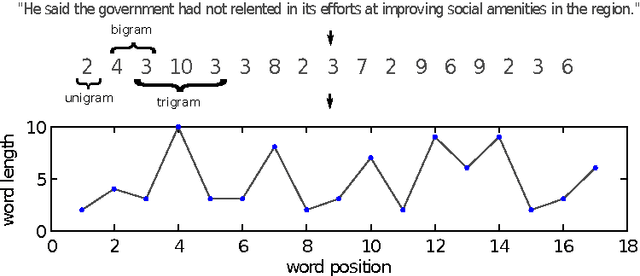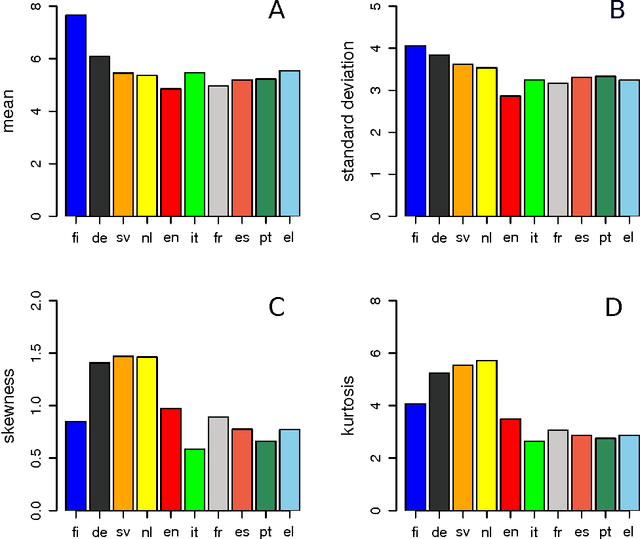Get our free extension to see links to code for papers anywhere online!Free add-on: code for papers everywhere!Free add-on: See code for papers anywhere!
Konstantinos Karamanos
Word-length entropies and correlations of natural language written texts
Jan 24, 2014Authors:Maria Kalimeri, Vassilios Constantoudis, Constantinos Papadimitriou, Konstantinos Karamanos, Fotis K. Diakonos, Harris Papageorgiou
Figures and Tables:







Abstract:We study the frequency distributions and correlations of the word lengths of ten European languages. Our findings indicate that a) the word-length distribution of short words quantified by the mean value and the entropy distinguishes the Uralic (Finnish) corpus from the others, b) the tails at long words, manifested in the high-order moments of the distributions, differentiate the Germanic languages (except for English) from the Romanic languages and Greek and c) the correlations between nearby word lengths measured by the comparison of the real entropies with those of the shuffled texts are found to be smaller in the case of Germanic and Finnish languages.
* 13 pages + 1 page of supporting information, 9 figures
Via
 Add to Chrome
Add to Chrome Add to Firefox
Add to Firefox Add to Edge
Add to Edge